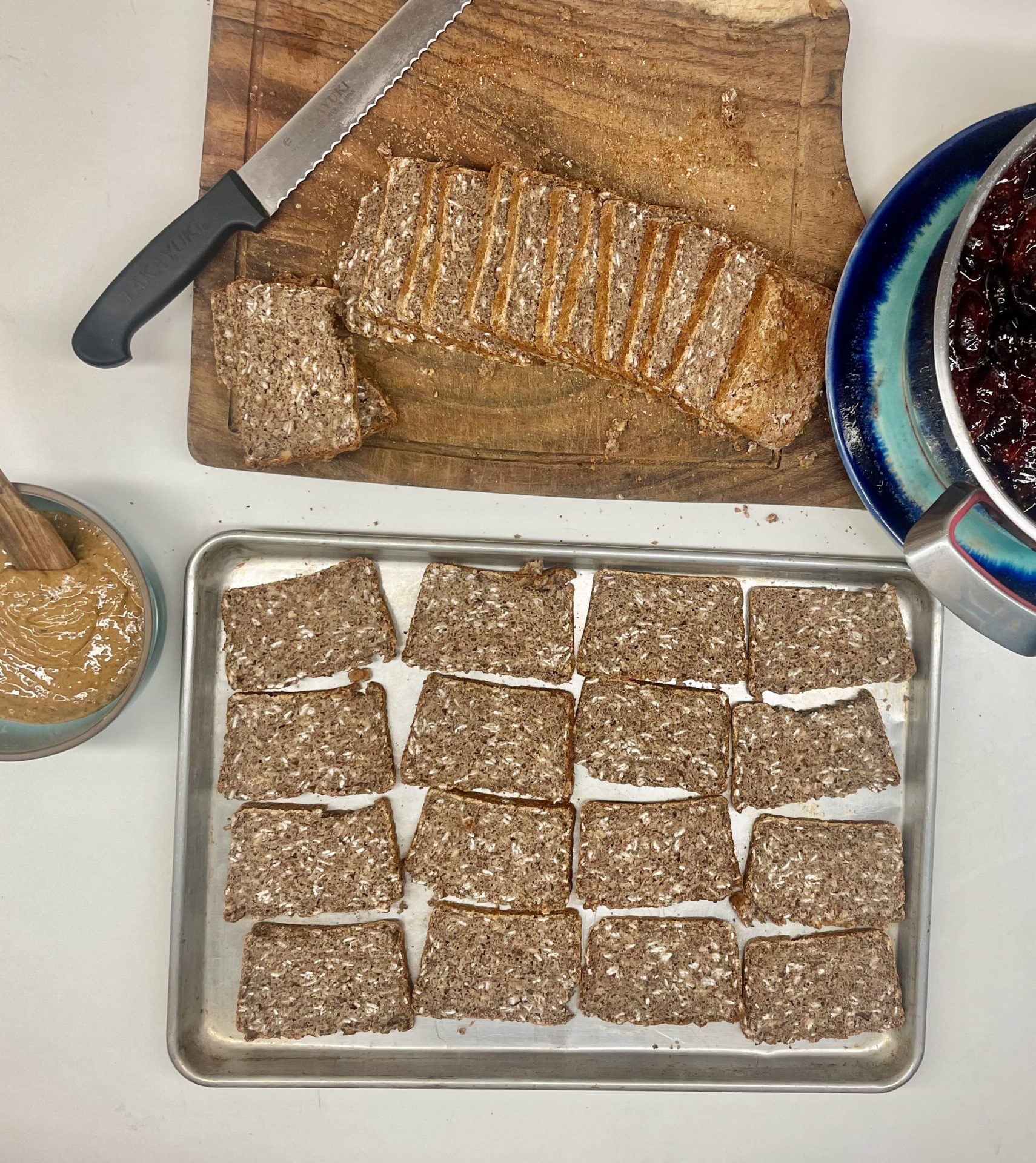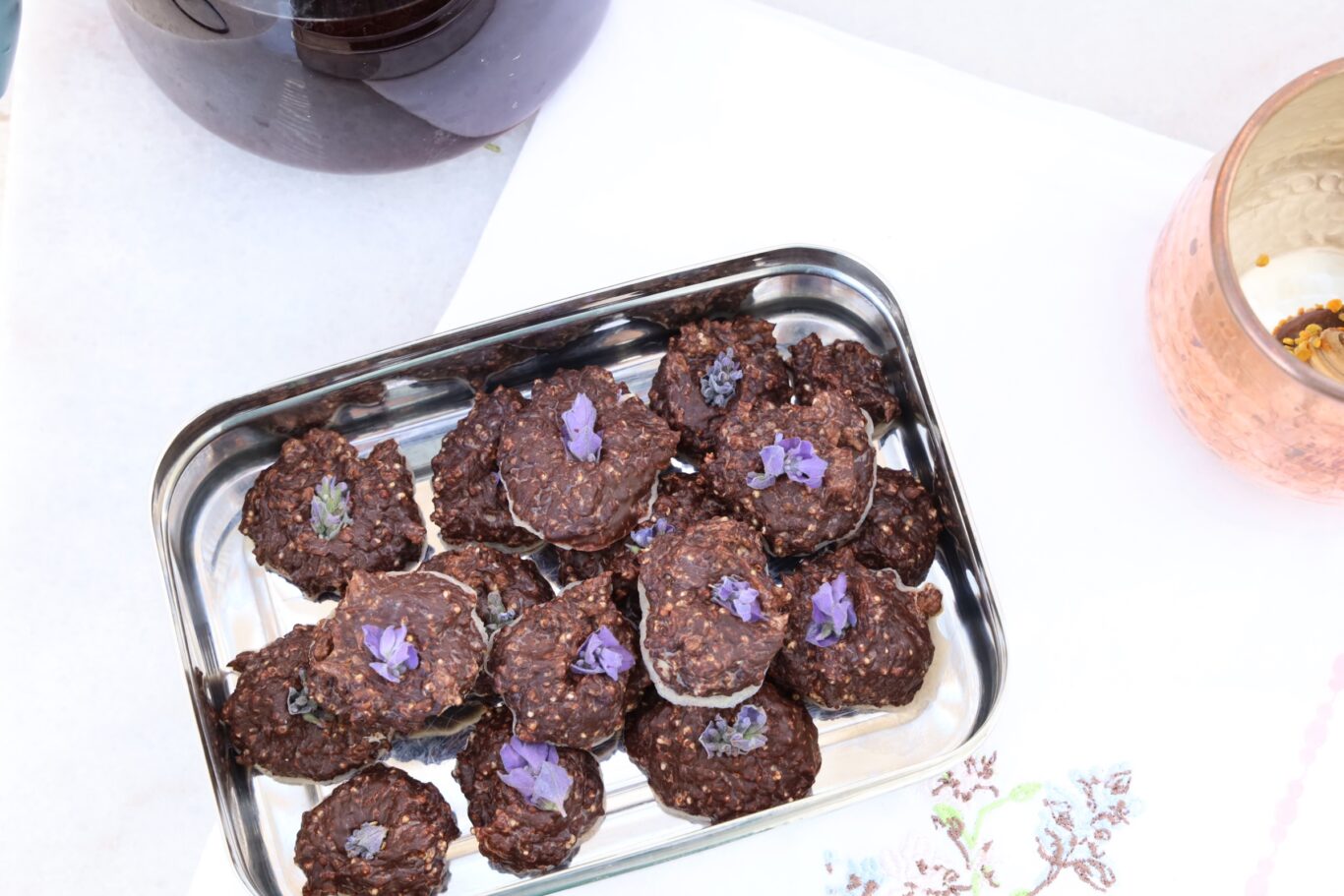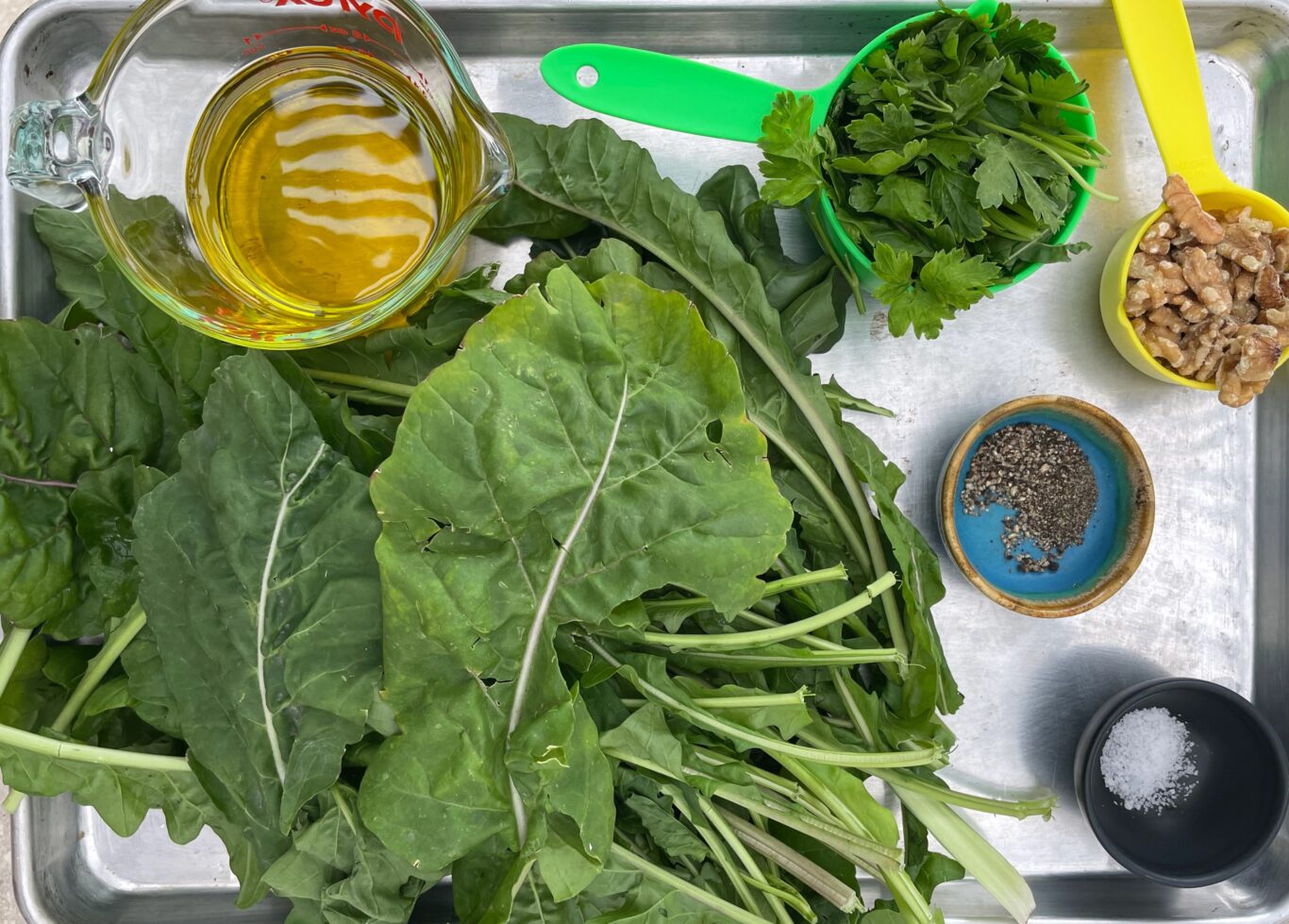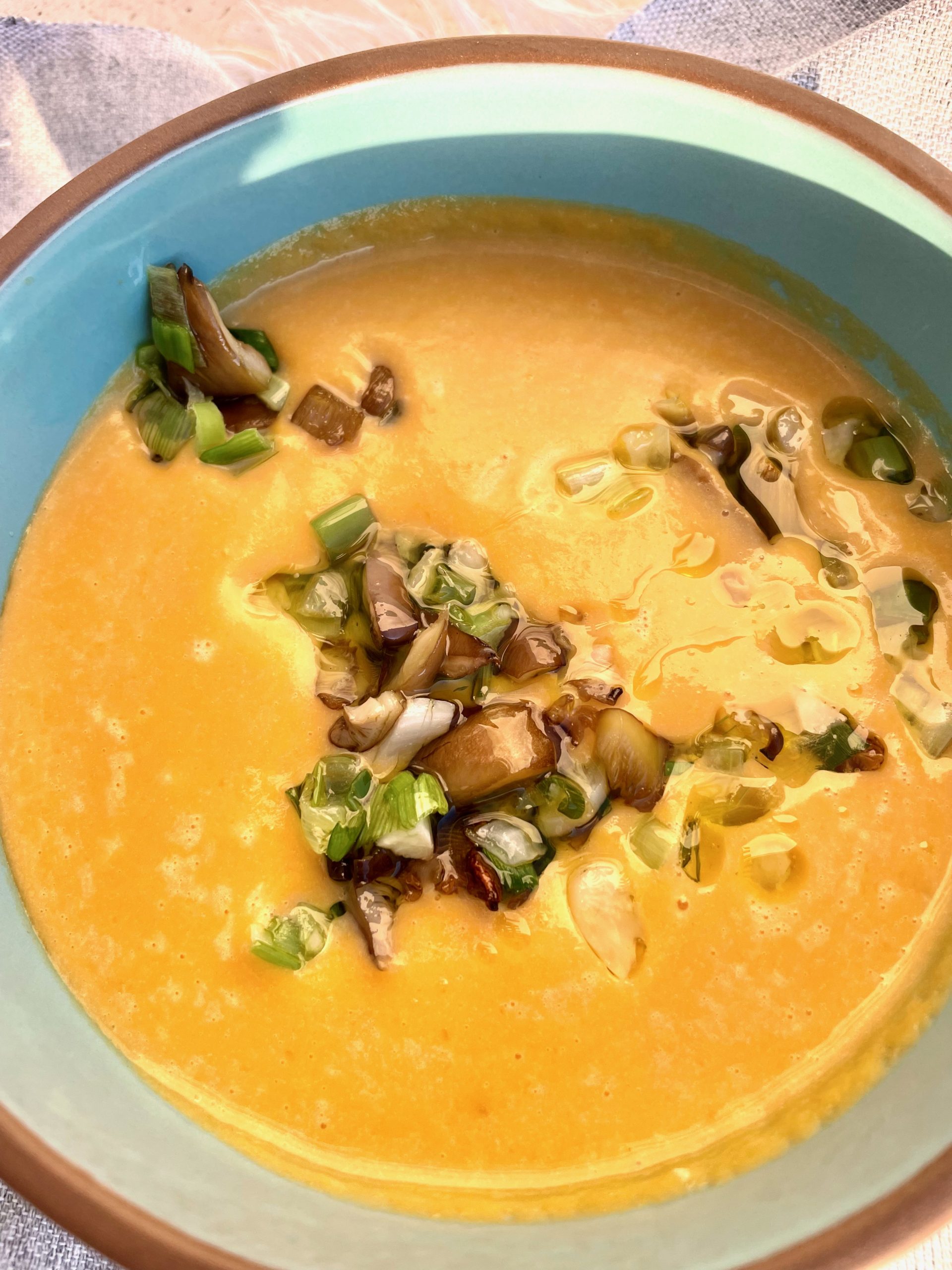This bread holds up to the rough treatment of kids, is moist, not crumbly, and holds sandwich fillings. It can be made the night before serving, the sandwiches made in the morning, and be delicious at lunch. Often gluten free bread is good when first baked, but not for a long time after. This bread is extremely nutritious as you can see for every 2 small slices as the serving size in the nutritional analysis below. The loaf is small and dense, but we love this because it is perfect toddler and small child size and provides a high amount of protein, fiber, carbohydrates, and B vitamins, as well as crucial minerals needed for growth of children. A regular wheat bread will not even provide 30% of the nutrients provided by this bread.
Kid-Approved Flax Bread: Boost Your Child’s Brain & Digestion Naturally 

This kid-tested, mom-approved flax bread has been declared “sooo good, Mom, you’re the best cooker” by a child who typically refuses to eat greens, broccoli, or most vegetables—except in his favorite veggie soup made with a rich broth base.
But what makes this nutrient-dense bread so special?




Many childhood behavior challenges may stem from three key factors:


If you’re already creating a predictable, emotionally secure environment with limited screen time and regular exercise, but still struggle with behavioral issues, nutrition could be the missing piece.
This flax bread is also packed with thiamine, iron, and other essential nutrients to keep your child’s brain and body thriving. Check out the full recipe and start nourishing your little one today!

#HealthyKids #BrainFood #Omega3ForKids #FlaxBread #KidApproved #ChildBehavior #HealthyEating #RealFood
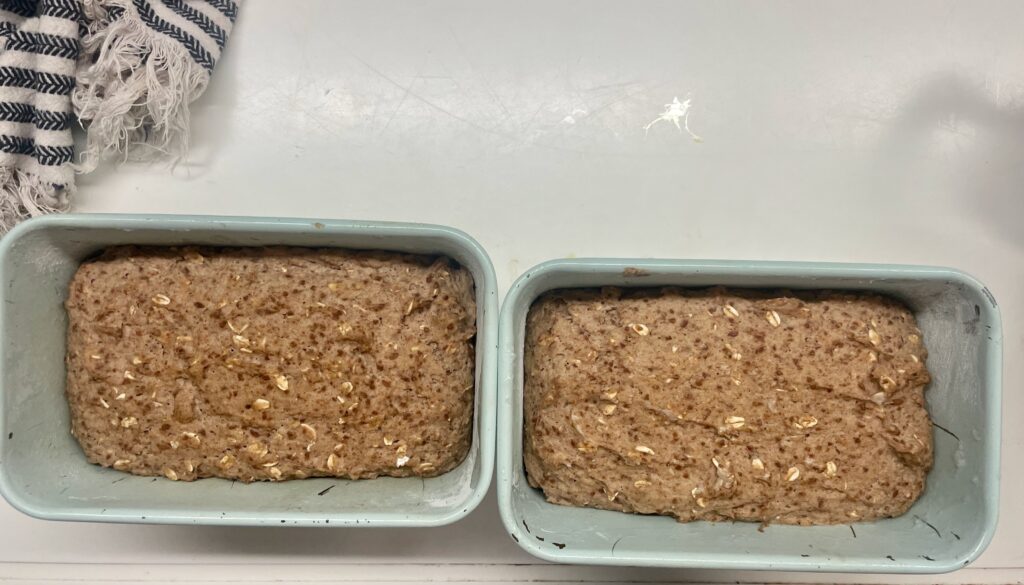
All Bread Recipes can be made Dairy Free
Simply substitute your favorite nut milk, soy milk, or even water when the volume is small, such as here. Often if I am substituting water for dairy, I add 1/2 t of coconut oil with 1 cup water for every cup of dairy, here that would be a smidge. Alternatively, the best suggestion is to use more of the Oat-Seed Milk we make from scratch here. I use goat dairy at this stage in our life because I have it on hand and am feeding a toddler. So when I use the dairy, I am providing him with riboflavin, a nutrient that is also high in dark leafy greens, which he is not consuming.
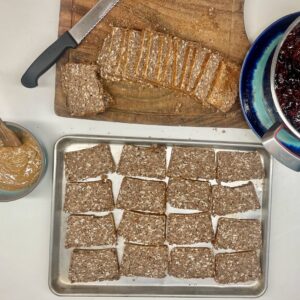
Kid’s Gluten-Free Seed Bread
Equipment
- 1 mixer
- 2 Bread Pans
- Measuring utensils
Ingredients
- 1 c warm water
- 2 T yeast
- 1/3 c goat milk
- 1 c oat seed milk: 1 T sunflower seeds, 1/3 c oats blended with 5c water
- 1 c water
- 1/2 c honey
- 1/4 c coconut oil
- 6 c whole grain flour mix*
- 2 c rolled oats
- 1 1/3 c ground flax seed
Instructions
- Mix the yeast mixture in a glass measuring cup: 1 cup warm water, 2 tablespoon fresh yeast.
- Let it react while you prepare the other ingredients.
- Warm the following ingredients on the stove: goat milk and oat seed milk
- In another bowl measure out your honey and coconut oil
- In a large mixing bowl, combine the dry ingredients: 6 cups whole-grain GF flour mix, 2 cups organic rolled oats, 1 1/3 cup ground flaxseed
- Combine the wet and dry mixtures:
- Slowly add the yeast mixture, the milk mixture, and the honey and coconut oil to the dry ingredients.
- Gradually add 3/4 to 1 1/4 cups water until the dough is very sticky and much wetter than traditional bread dough. It should be a bit stickier than a muffin batter, with some dough reaching up the sides, and most of it a curve at the bottom of the mixing bowl.
- The dough should be somewhere between muffin batter and cookie dough consistency—sticky and clinging to the sides of the mixing bowl.
- Prepare the bread pan:Grease a bread pan liberally with coconut oil. Dust the pan with tapioca flour.
- Transfer and let rise: Place the dough into the prepared bread pan.
- Allow it to rise for about 30 minutes – 1 hour until the dough is slightly elevated over the top of the pan. Rise time varies on many factors, moisture of your flours, activity of your yeast, ambient temperature, humidity.
- Preheat the oven: After 20 minutes of rise time, preheat the oven to 425°F.
- Bake at 425°F for 15 minutes.
- Reduce the heat to 350°F and bake for an additional 30 minutes, or until the bread sounds hollow when tapped.
- Remove the bread.
- Run a thin wooden spatula along the edges of the pan.
- Tilt the pan upside down to release. If it does not release, leave it upside down on any non-plastic hard surface, such as a wood cutting board. The bread should come out eventually, in thirty minutes to three hours as condensation between the edge of the pan and the bread loosen the bread.
- Slice with a serrated knife when cool.
Notes
Use more tapioca for better workability and less tapioca for increased nutrition.
Nutrition Facts
0 servings per container
| Amount Per Serving | ||
|---|---|---|
| Calories | 397 | |
| % Daily Value* | ||
| Total Fat 10.3 g | 16 % | |
| Saturated Fat 4 g | 20 % | |
| Trans Fat 0 g | ||
| Cholesterol 0.6 mg | 0 % | |
| Sodium 13.5 mg | 1 % | |
| Total Carbohydrate 67.2 g | 22 % | |
| Dietary Fiber 9.2 g | 37 % | |
| Total Sugars 11.4 g | ||
| Includes 9.9 g Added Sugars | ||
| Protein 10.8 g | 22 % | |
| Vitamin D 0.1 µg | 1 % |
|---|---|
| Calcium 66.4 mg | 7 % |
| Iron 3.5 mg | 19 % |
| Potassium 149.9 mg | 3 % |
*Percent Daily Values are based on a 2,000 calorie diet.
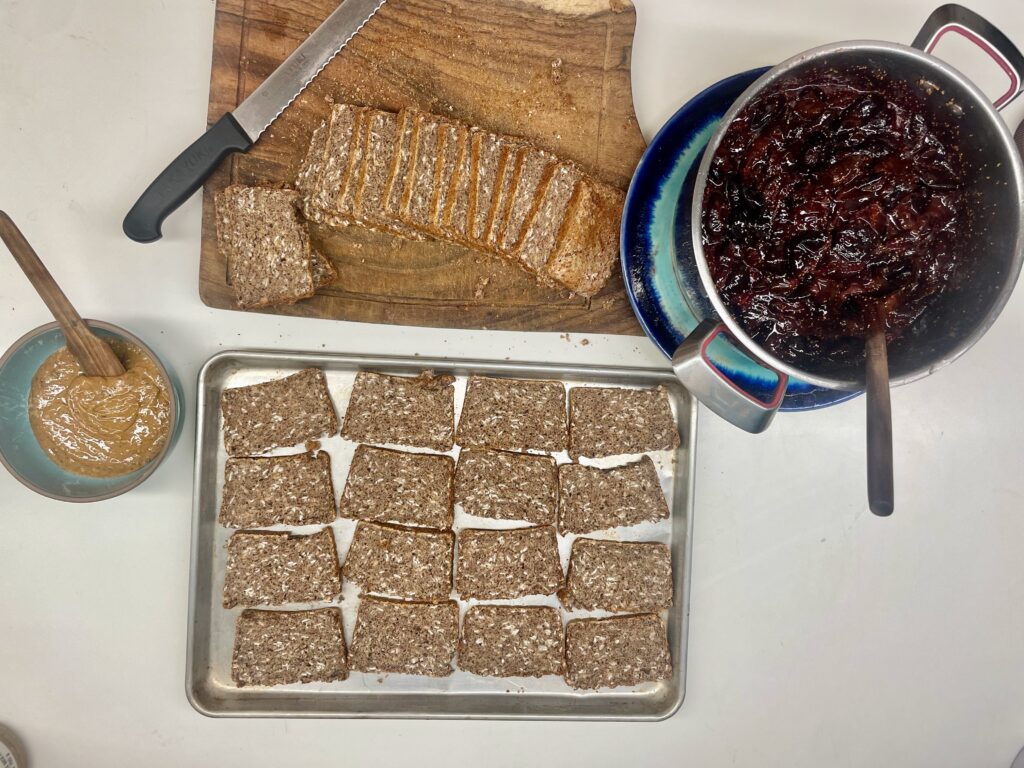
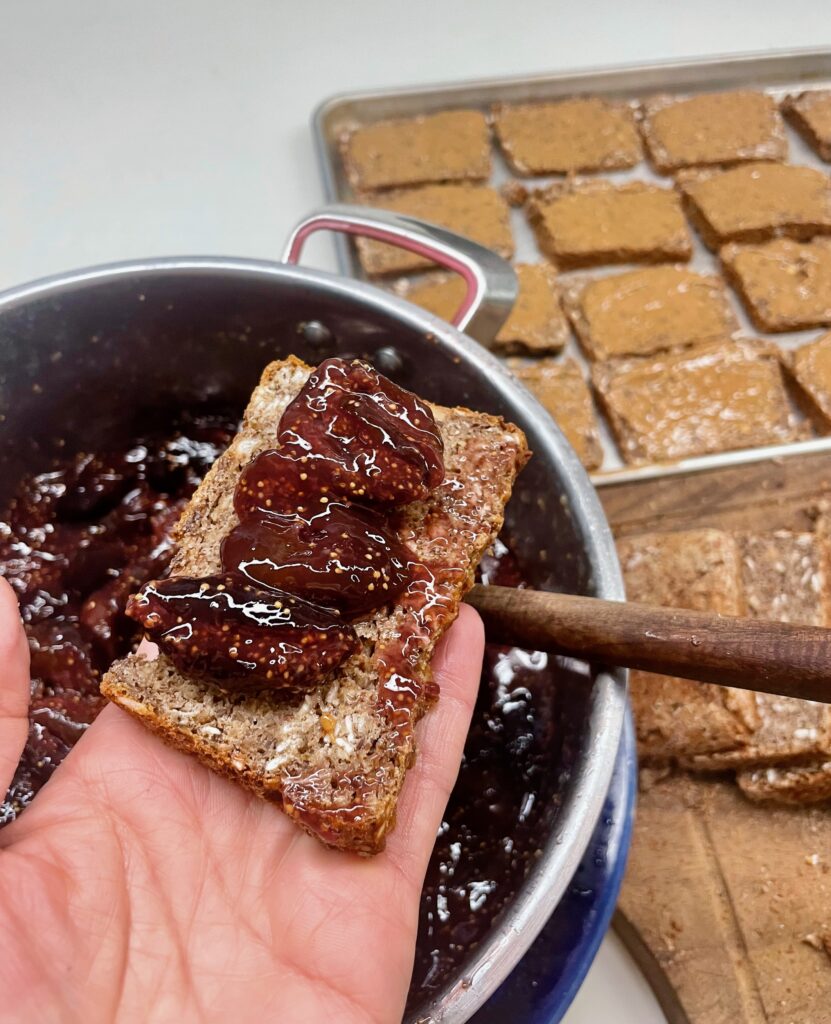
Complete Nutrition Facts for Male and Female Children 2-8 years of age
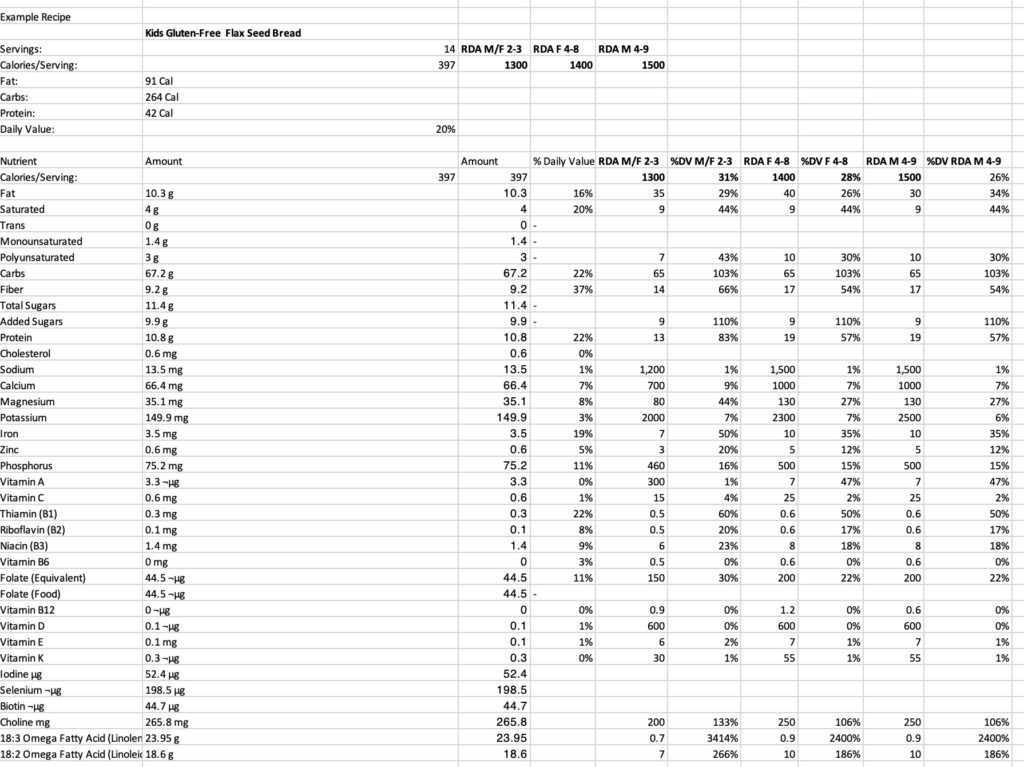
This table is an example of the type of calculations I perform in my consultation practice using the most recent governmental recommendations combined with the addition of other nutrients we need based on recent science. The dietary recommendations I make are based on real data and an in-depth knowledge of food composition, derived from analyzing thousands of recipes for their full nutrient profiles and their relevance to different populations.
For example, before calculating this recipe, I estimated that it contained at least 30% of a child’s protein needs, along with 30% of their thiamine requirement and similar levels for other B vitamins. As you can see, the actual values are even higher—56% of a child’s daily protein needs and 50% of their thiamine requirement. It even provides far abover 100% of two essential fats that are especially important for nervous system function (think athletic ability and intelligence), Omega-3 (Linolenic) and Omega-6 fats (Linoleic). These fats are usually missing in foods, but the high amount of flax in this recipe provides the nutrients.
In general, meals should aim to provide a wide range of nutrients. Here, just two slices of bread supply 12-110% of a child’s daily needs for 14 essential nutrients, with most falling in the 30-50% range. Considering the low cost and minimal time investment required to make this bread, the nutritional return is remarkably high.
If you’d like to optimize your diet or improve your child’s nutrition, development, and behavior, I offer consultations focused on children’s health and dietary patterns. I’d love to help!


